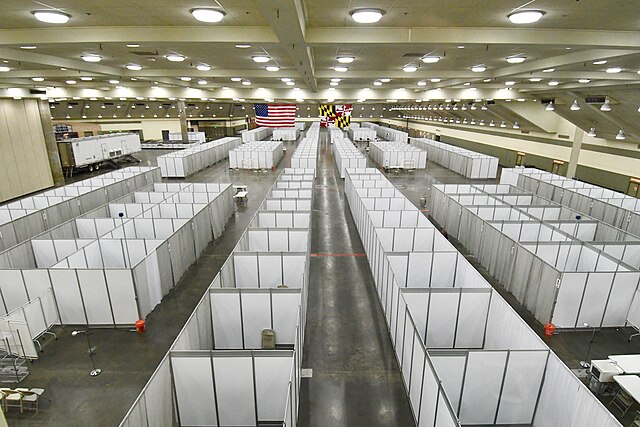1957–1958 influenza pandemic
The 1957–1958 Asian flu pandemic was a global pandemic of influenza A virus subtype H2N2 that originated in Guizhou in Southern China. The number of excess deaths caused by the pandemic is estimated to be 1–4 million around the world, making it one of the deadliest pandemics in history. A decade later, a reassorted viral strain H3N2 further caused the Hong Kong flu pandemic (1968–1969).
168 sick patients with Asian flu in a sports arena in Luleå, Sweden (1957).
At Vivallius School in Örebro, Sweden, only one student attended class due to the pandemic.
Excess mortality in Chile, 1953–1959. Flu seasons highlighted in gray. Note black spikes in the mortality rate.
A pandemic is an epidemic of an infectious disease that has spread across a large region, for instance multiple continents or worldwide, affecting a substantial number of individuals. Widespread endemic diseases with a stable number of infected individuals such as recurrences of seasonal influenza are generally excluded as they occur simultaneously in large regions of the globe rather than being spread worldwide.
Early in the COVID-19 pandemic, convention centers (pictured here) were deemed to be ideal sites for temporary hospitals, due to their existing infrastructure (electrical, water, sewage). Hotels and dormitories were also considered appropriate because they can use negative pressure technology.
Depiction of the burial of bodies during the Black Death, which killed up to half of Eurasia's population in the 14th century.
American Red Cross workers carry a body during the 1918–20 "Spanish flu" pandemic.
Social distancing in public







